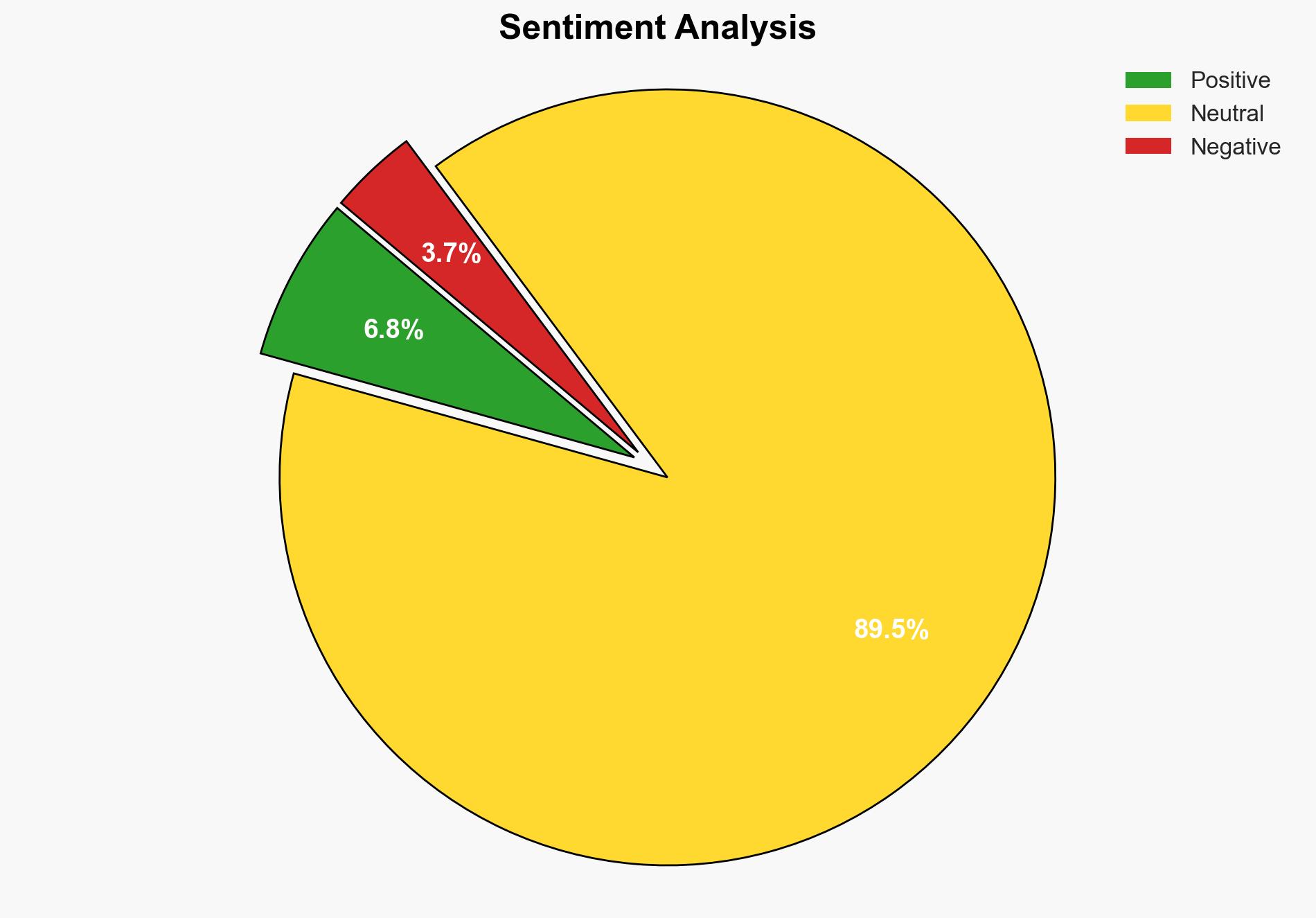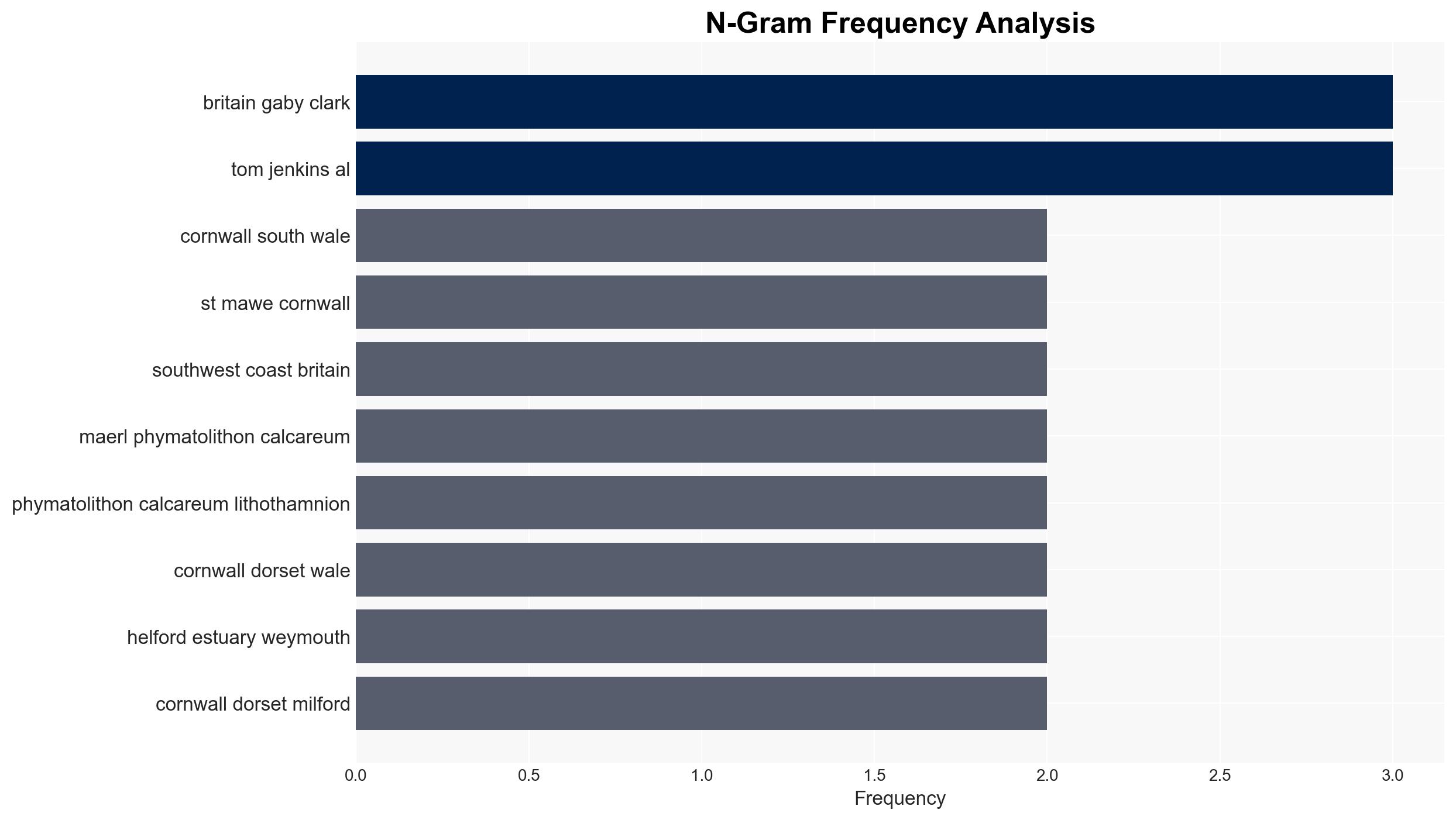Scientists map genetic distribution of maerl-forming algae across south-west Britain – Phys.Org
Published on: 2025-11-17
AI-powered OSINT brief from verified open sources. Automated NLP signal extraction with human verification. See our Methodology and Why WorldWideWatchers.
Intelligence Report: Genetic Distribution of Maerl-Forming Algae in South-West Britain
1. BLUF (Bottom Line Up Front)
With a moderate confidence level, the most supported hypothesis is that the genetic diversity and distinct populations of maerl-forming algae in south-west Britain present both a vulnerability and an opportunity for marine conservation and carbon capture strategies. Recommended actions include prioritizing conservation efforts in genetically diverse areas and leveraging these findings to enhance marine management policies.
2. Competing Hypotheses
Hypothesis 1: The genetic diversity and distinct populations of maerl-forming algae indicate a high resilience to environmental changes, suggesting a robust opportunity for conservation and carbon capture.
Hypothesis 2: The genetic diversity and distinct populations signify a vulnerability to environmental changes, necessitating immediate conservation efforts to prevent potential ecological degradation.
Hypothesis 2 is more supported due to the identification of populations at risk from environmental changes and human activities, as indicated by the genetic mapping.
3. Key Assumptions and Red Flags
Assumptions: The genetic diversity directly correlates with resilience to environmental changes. The study’s findings are representative of the broader maerl-forming algae populations.
Red Flags: Limited sample size and geographic scope may not fully capture the genetic diversity across all regions. Potential bias in interpreting genetic diversity as solely a resilience indicator without considering other ecological factors.
4. Implications and Strategic Risks
The findings could lead to increased political and economic pressure to enhance marine conservation efforts, potentially impacting local industries such as fishing and port management. Failure to act on these findings could result in ecological degradation, reducing carbon capture capabilities and affecting marine biodiversity.
5. Recommendations and Outlook
- Conduct further studies to expand the geographic scope and sample size to validate findings.
- Develop targeted conservation strategies for genetically diverse and vulnerable populations.
- Engage with local stakeholders to balance conservation efforts with economic activities.
- Best-case scenario: Enhanced conservation efforts lead to increased resilience of maerl beds, boosting carbon capture and biodiversity.
- Worst-case scenario: Inaction results in significant ecological degradation and loss of biodiversity.
- Most-likely scenario: Partial implementation of conservation strategies with moderate improvements in resilience and biodiversity.
6. Key Individuals and Entities
Dr. Tom Jenkins, project lead; University of Exeter; Gaby Clark, scientific editor; Robert Egan, associate editor.
7. Thematic Tags
Cybersecurity, Environmental Conservation, Marine Biology, Genetic Diversity, Climate Change Adaptation
Structured Analytic Techniques Applied
- Adversarial Threat Simulation: Model and simulate actions of cyber adversaries to anticipate vulnerabilities and improve resilience.
- Indicators Development: Detect and monitor behavioral or technical anomalies across systems for early threat detection.
- Bayesian Scenario Modeling: Quantify uncertainty and predict cyberattack pathways using probabilistic inference.
Explore more:
Cybersecurity Briefs ·
Daily Summary ·
Support us
·





